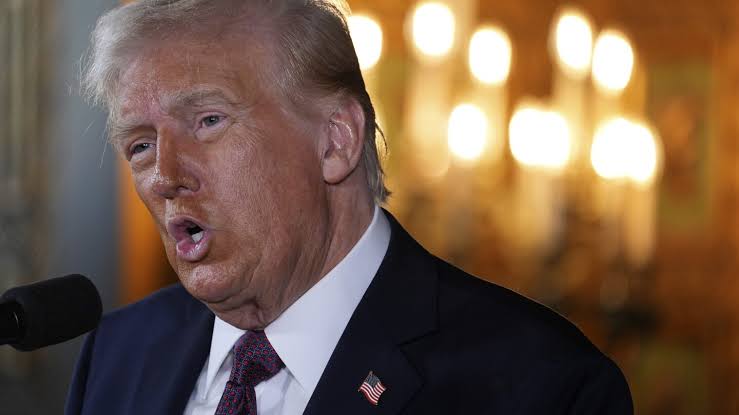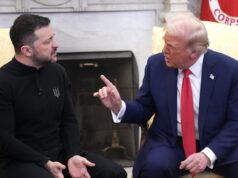Trump’s push for military options over the Panama Canal raises global tensions

The administration of President Donald Trump has reportedly directed the Pentagon to develop military options to ensure US access to the Panama Canal, a move that has sparked concerns about escalating geopolitical tensions in the region.
The directive, revealed in a National Defence Strategic Guidance memo obtained by CNN, underscores Trump’s growing concerns over what he describes as “ridiculous fees” and China’s expanding influence over the strategic waterway.
His repeated statements about “taking back” control of the canal have alarmed Panamanian officials and raised questions about the future of international agreements that have governed the canal for decades.
The Panama Canal is one of the most critical maritime passageways in the world, facilitating global trade between the Atlantic and Pacific oceans.
Since its transfer from the United States to Panama in 1999 under the Torrijos-Carter Treaties, the canal has remained neutral and open to all nations, with the Panama Canal Authority overseeing its operations.
However, Trump’s concerns centre around what he perceives as Beijing’s growing foothold in Panama, particularly through infrastructure investments and trade agreements signed under China’s Belt and Road Initiative.
In recent months, Trump has refused to rule out military force as a means of ensuring US access to the canal, stating that “all options are on the table” to protect American economic and national security interests.
The latest directive to the Pentagon appears to formalize those threats, with the White House ordering an immediate assessment of credible military strategies to secure unrestricted US access.
According to unnamed sources cited by major news outlets, the Department of Defence is examining a range of responses, including deepening military partnerships with Panama’s security forces and a more extreme option involving direct US military intervention to seize the canal by force.
While Trump has framed his concerns around economic interests, analysts suggest that the focus on China’s influence may be driving the aggressive stance.
Chinese companies, including state-linked firms, have made investments in Panama’s ports and infrastructure projects, which Trump and other US officials argue could be leveraged for strategic purposes.
In February, US Secretary of State Marco Rubio personally delivered an ultimatum from Washington to Panamanian President Jose Raul Mulino, urging him to distance the country from China.
Shortly afterward, Mulino’s government declined to renew agreements signed in 2017 as part of the Belt and Road Initiative, signaling a shift in alignment that likely pleased Washington.
Despite this concession, Panamanian officials have strongly rejected Trump’s claims regarding control over the canal, insisting that the waterway remains under sovereign Panamanian management and operates without foreign interference.
The Panama Canal Authority has reiterated that the administration of the canal is exclusively handled by Panamanians, dismissing accusations of Chinese dominance as baseless.
President Mulino has also reaffirmed Panama’s sovereignty, stating that the canal is an inalienable part of the nation’s heritage and will not be subjected to external control.
Nevertheless, the prospect of US military involvement in Panama has ignited concerns both within the country and across the region.
Many Latin American nations have long viewed US intervention in their affairs with suspicion, given Washington’s history of military and political involvement in the region.
A potential US move to assert direct control over the canal would likely be met with widespread opposition, not only from Panama but also from regional organizations and international bodies that advocate for national sovereignty and non-interventionist policies.
Beyond Latin America, China is expected to respond strongly to any US attempt to use military force in Panama. Beijing has steadily expanded its economic and diplomatic presence in Latin America, and a US effort to curb its influence in the region could strain relations between Washington and Beijing even further.
Given the already heightened tensions between the two global powers over Taiwan, trade disputes, and military posturing in the Indo-Pacific, a direct confrontation over the Panama Canal could add another volatile element to the rivalry.
Within the United States, Trump’s push for military options has sparked debate over the necessity and risks of such an approach. While some policymakers support a firmer stance against China’s growing influence, others caution that a military confrontation over the canal would be reckless and could backfire politically and diplomatically.
Critics argue that Trump’s focus on securing unilateral control over the waterway disregards Panama’s sovereignty and undermines the very principles of international cooperation that the US has historically promoted.
For Panama, the unfolding situation presents a challenging diplomatic balancing act. While the country benefits from economic relations with both China and the United States, it now finds itself at the centre of a geopolitical power struggle.
President Mulino’s decision to forgo renewing agreements with China may help ease tensions with Washington in the short term, but it also risks limiting economic opportunities that Panama had pursued through its engagement with Beijing.
Meanwhile, resisting US pressure too strongly could invite further interventionist moves from the Trump administration, which has demonstrated a willingness to act unilaterally when it perceives American interests to be at stake.
As the Pentagon continues its assessment of military options, global reactions will play a crucial role in shaping the outcome of this growing crisis.
International organizations, including the United Nations and regional bodies such as the Organization of American States, may be called upon to mediate between Panama and the United States to prevent a potential escalation.
Additionally, diplomatic engagement between Washington and Beijing will be critical in ensuring that competition over the canal does not lead to a broader conflict between the two superpowers.
Ultimately, Trump’s push to assert greater US control over the Panama Canal highlights the complexities of global power struggles in the 21st century.
As Washington and Beijing vie for influence in strategically vital regions, smaller nations like Panama find themselves caught in the crossfire, forced to navigate competing pressures from the world’s largest economic and military powers.
Whether Trump follows through on his threats or backs down in the face of international opposition remains to be seen, but one thing is certain: the future of the Panama Canal is now a flashpoint in the growing geopolitical rivalry between the United States and China.




